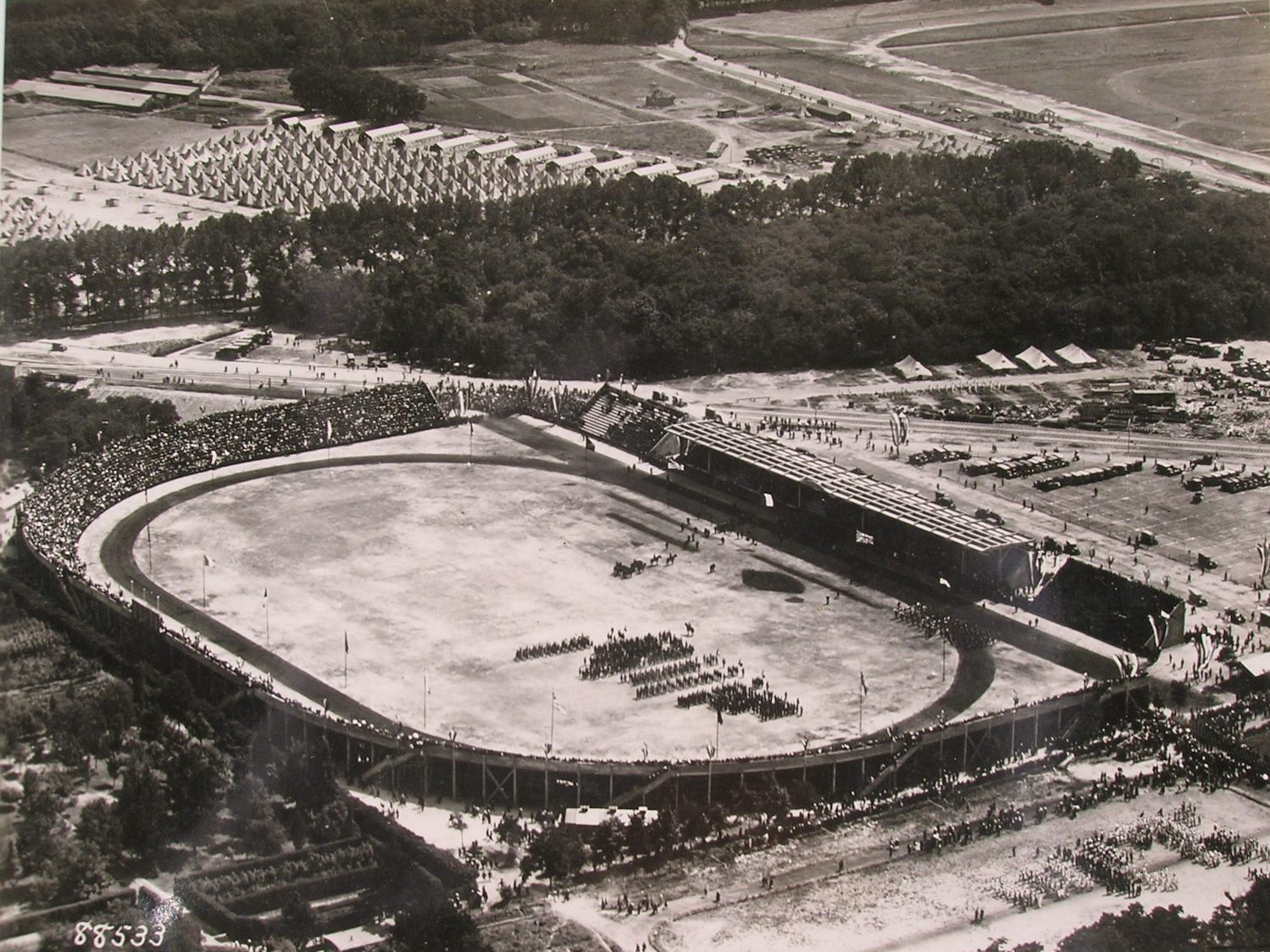- The 2020 Tokyo Olympics have been postponed by a full year due to the coronavirus pandemic.
- While the move was historic, it certainly wasn’t unprecedented, as the Olympics have been canceled on three different occasions.
- In 1916, World War I forced the cancellation of the Olympics for the first time, but the Allied powers held an Olympics-like competition three years later.
- In 1919, athletes from the US, UK, Australia, France, and more gathered outside of Paris to compete in the Inter-Allied Games.
- Check out photos, documents, and memorabilia from the one-time event courtesy of the National WWI Museum and Memorial in Kansas City, Missouri.
- Visit Insider’s homepage for more stories.
In March, the International Olympic Committee announced that the 2020 Tokyo Olympics would be postponed by a full calendar year due to the coronavirus pandemic.
While the decision has rattled the entire sporting world, it certainly wasn’t an unprecedented move, as the Olympics have been canceled on three different occasions before 2020.

As World War I ravaged Europe in 1916 and pulled many of the world’s powers into conflict, organizers were forced to cancel the modern Olympics for the first time. But after a sudden ceasefire in late 1918 brought an end to the fighting in France, the opportunity for a pseudo replacement for the Olympics arose.
From June 22 t0 July 6 of 1919, athletes from Allied nations - including the US, UK, Australia, France, and more - gathered outside of Paris to partake in the Inter-Allied Games. Hundreds of participants competed across 26 different sports in front of more than 500,000 spectators to help boost morale after all the devastation and sacrifice of the war.
The National WWI Museum and Memorial in Kansas City, Missouri, collected artifacts from the one-time event for an exhibition it hosted in 2012, and you can check out photos, documents, and memorabilia from the Inter-Allied Games below, courtesy of the museum:
Welcome to the Inter-Allied Games, a two-week competition organized by the Allied powers of WWI in place of the 1916 Olympics.

Then known as the Great War, WWI forced the cancellation of the 1916 Summer Olympics that were set to take place in Berlin.

But once the fighting stopped in Europe, the Allied powers organized the one-of-a-kind sporting event to boost morale and fill the void left by the canceled Olympics three years prior.

Athletes from various Allied nations — including Australia, Belgium, Canada, France, Italy, the UK, the US and more — competed in 1919's Inter-Allied Games.

More than 500,000 spectators gathered outside of Paris over the two weeks.

The Games' major events took place at Pershing Stadium, a 20,000-seat arena that enclosed nine acres of field.

The stadium cost $100,000 to build.

But, somewhat surprisingly, it only took a few months to construct.

The Inter-Allied Games' equivalent of an "Olympic Village" was a series of tents divided up by country.

The Games kicked off with an Olympics-style opening ceremony on June 22.

More than 1,500 people participated in the Inter-Allied Games kick-off event.

And, of course, the press was there to capture it all.

Then, hundreds of athletes were ready to begin competing across 26 different sports.

Including golf...

... rugby...

... fencing...

... baseball ...

... water polo ...

... equestrian ...

... basketball...

... soccer...

... boxing...

... wrestling...

... swimming...

...track and field...

... and more.

Women were not allowed to compete, even though the Olympics had opened up certain competitions to women back in 1900.

Like the Olympics, the Inter-Allied games awarded medals to first-, second-, and third-place finishers.

Some noteworthy individuals earned participatory ribbons (pictured below), while other all-star athletes found their way to the podium.

Multiple previous and soon-to-be Wimbledon champions participated in the tennis events, including France's Andre Gobert (middle-right) and Australia's Randolph Lycett and Pat O'Hara Wood (middle-left).

Future world heavyweight champion Gene Tunney boxed on behalf of the United States.

American swimmer Norman Ross won gold in the 100-meter, 1,500-meter, and 400-meter freestyle — setting a world record in the latter event. Ross would win three Olympic gold medals and set 13 world records during his career.

On the final day of the Inter-Allied Games, the stadium was officially gifted to France, and flags were lowered to honor those who died during the war.

And while the Olympics resumed the following summer in Antwerp, Belgium, the Inter-Allied Games served its own important role outside of athletics.

"This was a world-class competition featuring some of the best athletes in the world," National WWI Museum and Memorial Senior Curator Doran Cart said. "Perhaps more importantly, the Inter-Allied Games served as a vehicle for healing the wounds from the most catastrophic war to that time in human history."

Now check out 33 stunning photos of Simone Biles dominating the competition:

